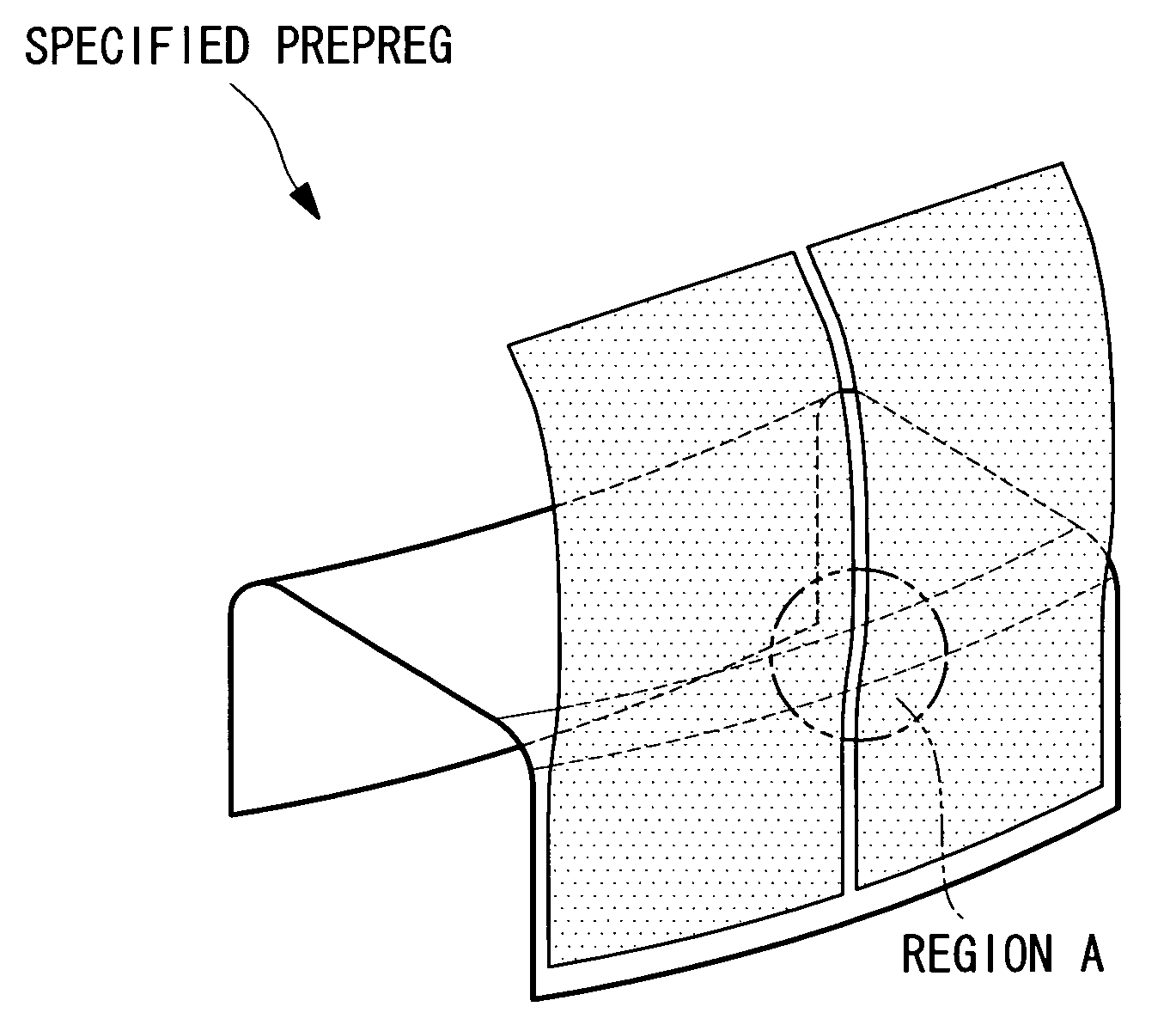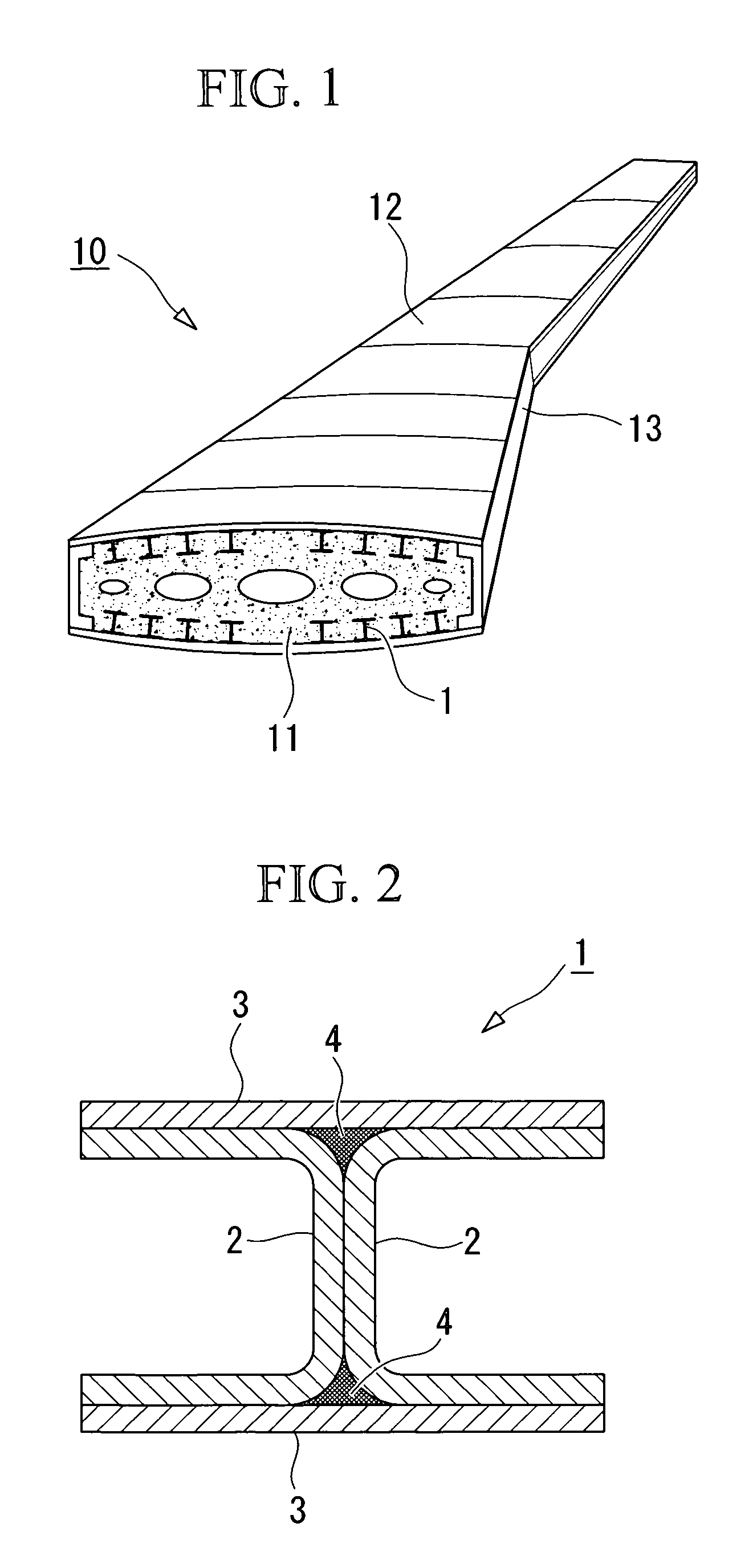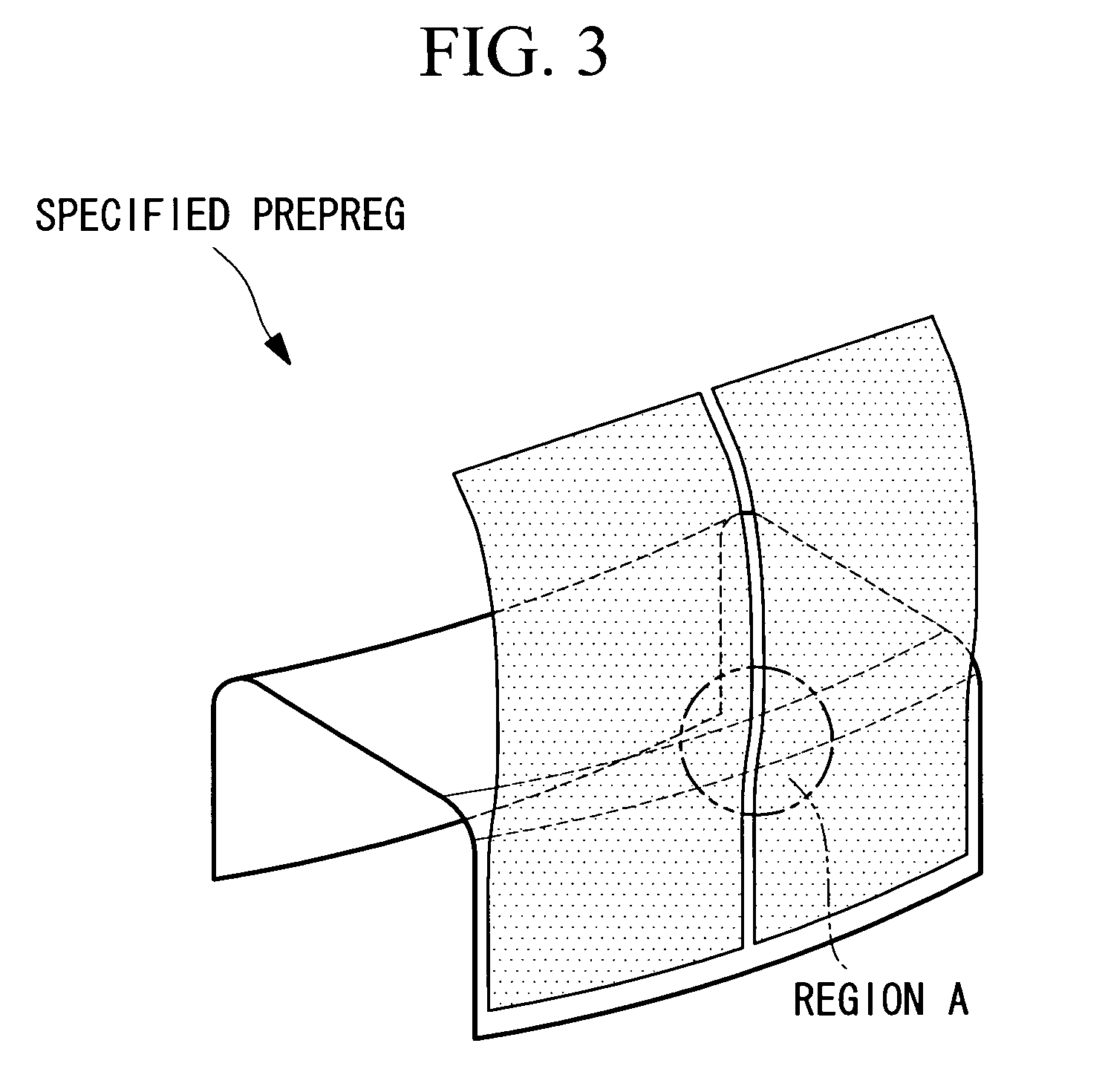Method of Molding Composite Material Structural Member and Composite Material Structural Member
- Summary
- Abstract
- Description
- Claims
- Application Information
AI Technical Summary
Benefits of technology
Problems solved by technology
Method used
Image
Examples
Embodiment Construction
[0038]Embodiments of the method of molding a composite material structural member according to the present invention and the resulting composite material structural member are described below based on the drawings.
[0039]FIG. 1 is a perspective view showing an example of the structure of a wing box that constitutes a portion of an aircraft main wing. This wing box 10 is a hollow structure in which the backbone is formed by combining a plurality of H-shaped stringers 1 and rib materials 11 in a grid pattern, and the exterior of this backbone is then coated with a skin 12 and spars 13.
[0040]The H-shaped stringers 1 are composite material structural members with an H-shaped cross-section that extend along the length (the longitudinal direction) of the main wing, and are formed, for example, from a carbon fiber composite material comprising carbon fiber combined with a polymer material such as an epoxy resin. As shown in FIG. 2, each of these H-shaped stringers 1 is composed of six compo...
PUM
 Login to View More
Login to View More Abstract
Description
Claims
Application Information
 Login to View More
Login to View More - R&D
- Intellectual Property
- Life Sciences
- Materials
- Tech Scout
- Unparalleled Data Quality
- Higher Quality Content
- 60% Fewer Hallucinations
Browse by: Latest US Patents, China's latest patents, Technical Efficacy Thesaurus, Application Domain, Technology Topic, Popular Technical Reports.
© 2025 PatSnap. All rights reserved.Legal|Privacy policy|Modern Slavery Act Transparency Statement|Sitemap|About US| Contact US: help@patsnap.com



